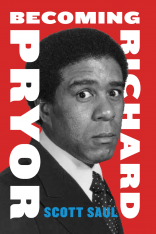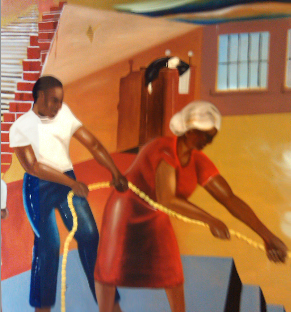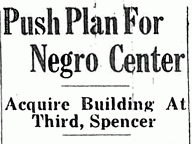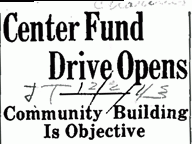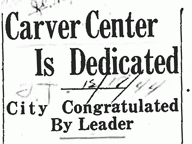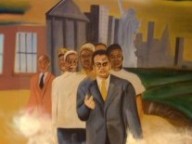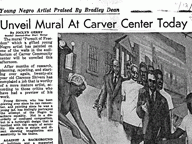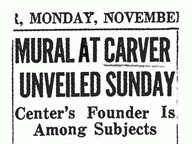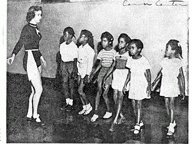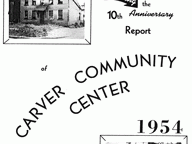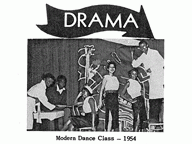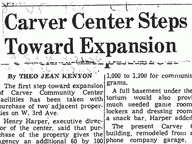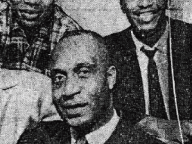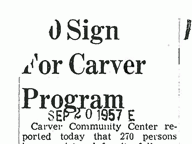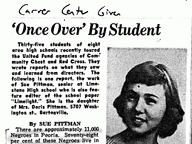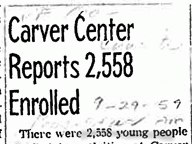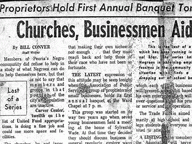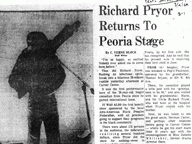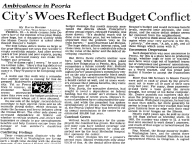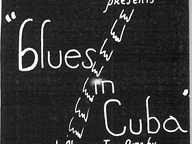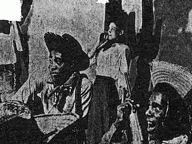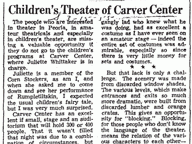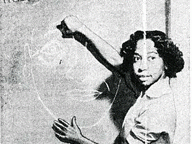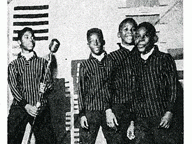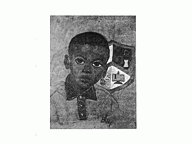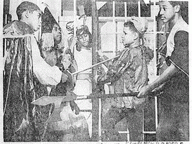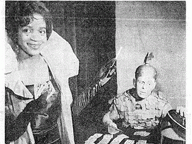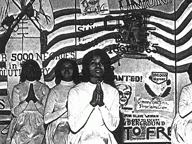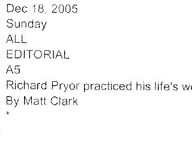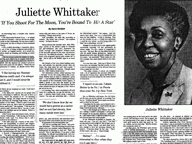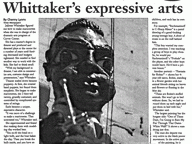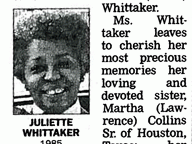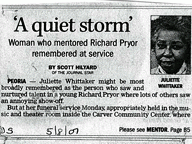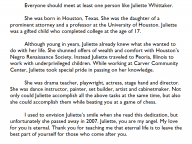The Carver Center
Richard Pryor first assumed a stage as an entertainer — and first felt the thrill of performing for a largely black audience — at the George Washington Carver Center in downtown Peoria.
Built in the midst of World War II, the Carver Center was a thriving hub of activity by the time Richard entered its doors at age 14. An outgrowth of Peoria’s Colored Women’s Aid Society, Carver aimed to promote integrity and industry among Peoria’s young black population. Moral uplift and practical help were the Center’s twin themes, felt in its daily operations and literally visible in the large mural that decorated its auditorium, in which a black matron and a black working-class man doggedly pulled a rope that trailed down to a set of needy hands.
The Center was in no small part a response to the Northern-style segregation of Peoria in the 1940s and 1950s. While black and white children attended the same schools in Peoria, blacks were steered away from extracurricular involvements at those schools — made to feel unwelcome, for instance, at proms and social clubs. As a result, Carver became Mecca for Peoria’s young blacks. It was where they took tap or modern dance lessons, learned to play in a jazz band or on a basketball team, or held talent shows and performances.
Meanwhile the pinch of housing segregation of Peoria — a great majority of Peoria’s blacks were concentrated in the poor area around Carver — meant that Carver came to serve more than the young. The Center became a magnet for adults in the neighborhood, offering a home to community organizations and later extending much needed services like child care and health care.
While the rhetoric of the Carver Center emphasized moral uplift, many kids did not come to Carver to be uplifted or deposited on a direct path to the middle class. They came there to have fun, meet friends, and develop their talents — even if, as in the case of Pryor, their talents led them away from the path of sober accomplishment.
At Carver, Pryor had the good fortune to connect with Juliette Whittaker, the Center’s theater director and resident bohemian. “Miss Whittaker” was the young Richard’s first mentor as an artist. She believed in him, showcasing him in plays that she wrote and then in talent shows that she put together. Richard was the only comedian in the Carver Center’s talent shows; most boys devoted themselves to music or singing groups. Even as a teenager, he was in a category of his own.
